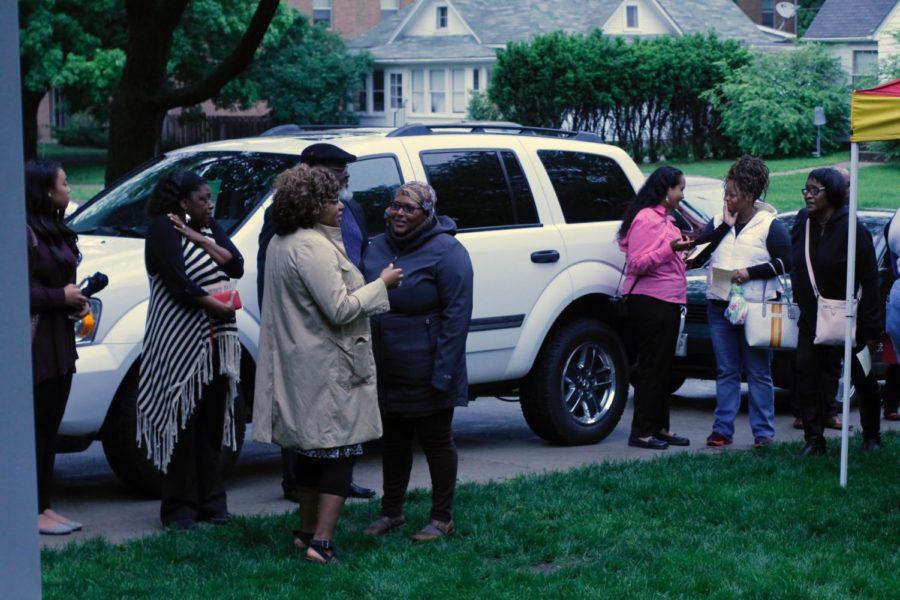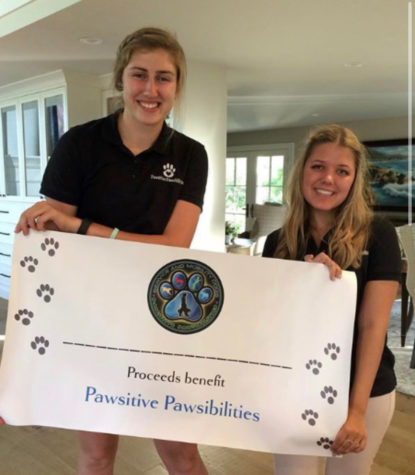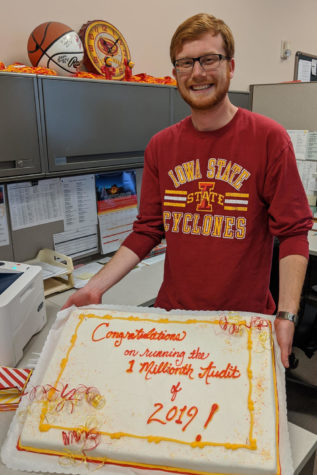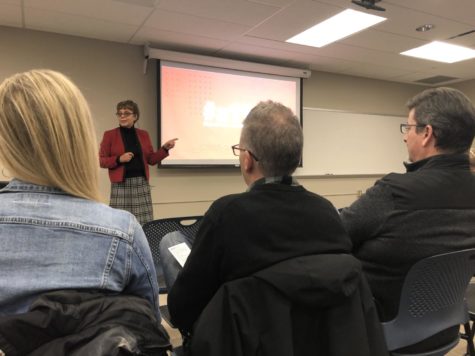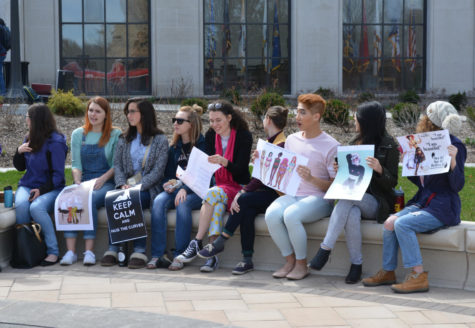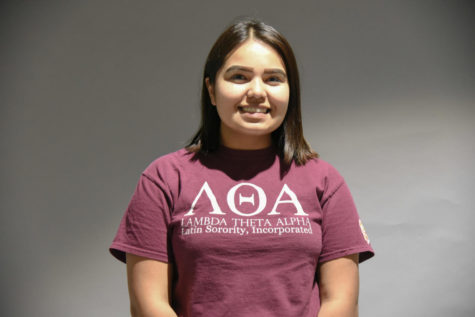Dr. George A. Jackson joins ranks of Trice, Carver in ISU history
May 20, 2017
It was a wet Saturday morning, with a light rain and overcast skies starting to leave mud patches in the yards leading up to the homes along Welch Avenue. People were heading for one house in particular – 517 Welch Avenue, the Black Cultural Center.
Quick steps up to the porch and inside the door was a crowd of Iowa State community members: alumni, students, faculty and administrators, all who had come to celebrate the center’s impact on their community and the man it would be named after that morning.
Inside it was warm, cheerful and surprisingly spacious. The normal living room furniture had been cleared to create space for more seating that flowed into the dining room. Several groups hovered in the kitchen doorway, or went upstairs to view the Jack Trice Library. It wasn’t just a center – it was a home they were returning to once more.
It could have been a family reunion – and it was, of sorts. It was a reunion to celebrate Dr. George A. Jackson’s legacy, the man many credited for making Iowa State their home. Chatter filled the house, with Jackson’s grandchildren running up the stairs and laughing in the rooms above.
Jackson came to Iowa State in 1978, to what was then the Minority Student Office. Knowing he was there to make big changes in minority enrollment and retention, his first move was to change the department to the Office of Minority Student Affairs – the beginning of his legacy at Iowa State.
Dr. Tom Hill, a former Iowa State administrator, stood at the door greeting people, chatting with familiar faces and smiling widely at unfamiliar ones. Interim President Benjamin Allen sat next to Jackson’s family members.
Allen had worked with Jackson as a colleague during Allen’s time as vice president for academic affairs and provost from 2002 to 2006. Both arrived at Iowa State within a year of each other, in 1978 and 1979 respectively.
“Dr. Jackson was a visionary leader, a passionate advocate – that understates it,” Allen said during the ceremony. “He was a fighter. He’d come into my office occasionally when I was provost and he wouldn’t leave until he got what he wanted.”
Those who knew Dr. Jackson laughed, agreeing.
While Jackson held many positions, Allen felt listing off those accomplishments didn’t fully capture the man, but he did mention some of the programs Jackson created, including the Multicultural Liaison for each college.
The Iowa State Jackson came to is very different from the Iowa State he created and left behind, in both the programming and services side and in the enrollment side. Several administrators who walk in Jackson’s footsteps took the time to speak on how Jackson’s influence is still felt.
Reginald Stewart, vice president for diversity and inclusion, said he was feeling very philosophical about the rain.
“When you plant seeds, rain means growth. And Dr. Jackson planted seeds, and we’re here to make them grow,” Stewart said. “It’s an honor, and an extreme challenge, to walk another mile in his shoes, that he’s paved before us.”
Stewart said renaming the Black Cultural Center after Jackson was a universal agreement made 299 days ago.
“It’s a testament to the Black leadership at Iowa State,” Stewart said. “Today is about legacy. It’s about transcending physical presence, and it’s about ensuring that current Cyclones, as well as future Cyclones, know the name of Dr. Jackson.
“Now this name is going to be synonymous. It’s going to stand with George Washington Carver, Jack Trice, as monumental men of Iowa State.”
“As I think about legacy, there’s a song in the African American faith tradition that simply says ‘May the works that I’ve done speak for me. May the life that I’ve lived speak for me. May the service that I give speak for me,'” said Kenyatta Shamburger, director of the office of multicultural student affairs.
Shamburger spoke on the importance of the center itself as a place for all people, not just African Americans, to meet, cook, learn or relax.
“We know that students of color exist in a primarily white institution, so the ability to see themselves and to understand the history of the people who look like them and who have had similar experiences is vitally important,” Shamburger said.
The center was used every week of the past academic year, with an average of three to five events every week, Shamburger said. 39 different groups had reserved the space for almost 300 events in the past year.
Two students leaders spoke on behalf of the current students who use the center: Malik Burton, president of the Black Student Alliance, and Julian Neely, president of Alpha Phi Alpha Fraternity.
As a freshman, Burton had lived in Towers and passed the center without realizing it, not expecting a house.
“I believe the makers of the Black Cultural Center understood the importance of home,” Burton said. “For people of color, especially African American students, when you come to a predominantly white institution it can be difficult to navigate the campus and find a place where you can relax and be completely yourself, and this is what the Black Cultural Center as done.”
Burton and Neely both said their groups use the house as a second home, spending time together in community space to play games, read or share Sunday dinner, even teasing members about who makes cornbread the ‘right’ way.
“I can’t stop smiling,” Burton said.
Neely said the reason the center as a home benefitted himself and other students is because it is a place to gather and bond in a comfortably-sized space.
“We have a kitchen that’s functional. We’ve cooked a lot of things here, which is fun. Just another way to bond with each other,” Neely said. “This is a great place, that needs to continue here. Renaming it adds value to it and shows that we appreciate this space and we appreciate people of color.”
Neely said he hopes future students will come to know and appreciate Jackson’s work.
Jackson’s widow, Clemmye Jackson, unveiled the new sign in her husband’s name with the help of former administrator Tom Hill and her granddaughter.
“I have one thing I want you to remember about him, because he always said ‘We doin’ good, but we can do great,'” she said.

